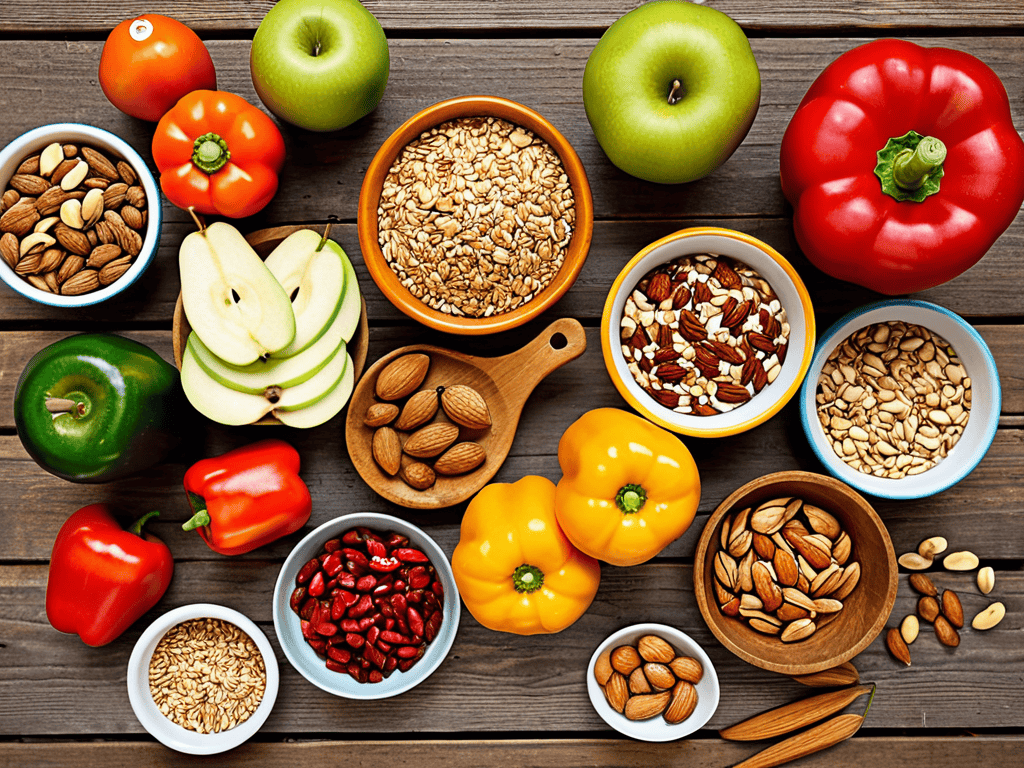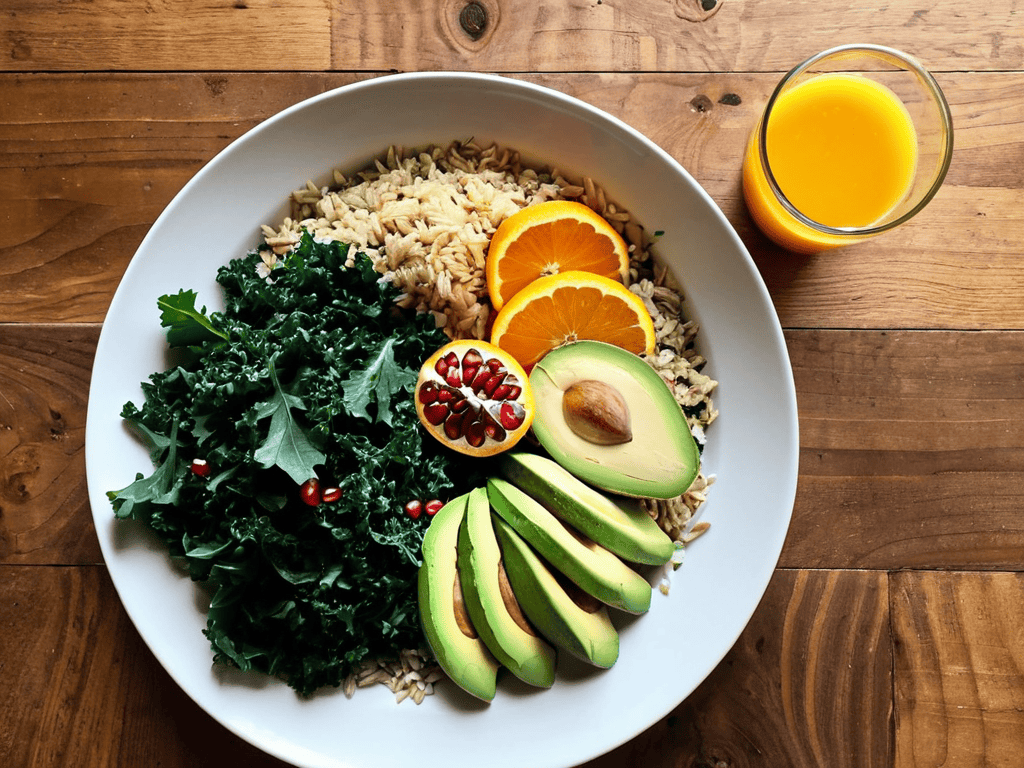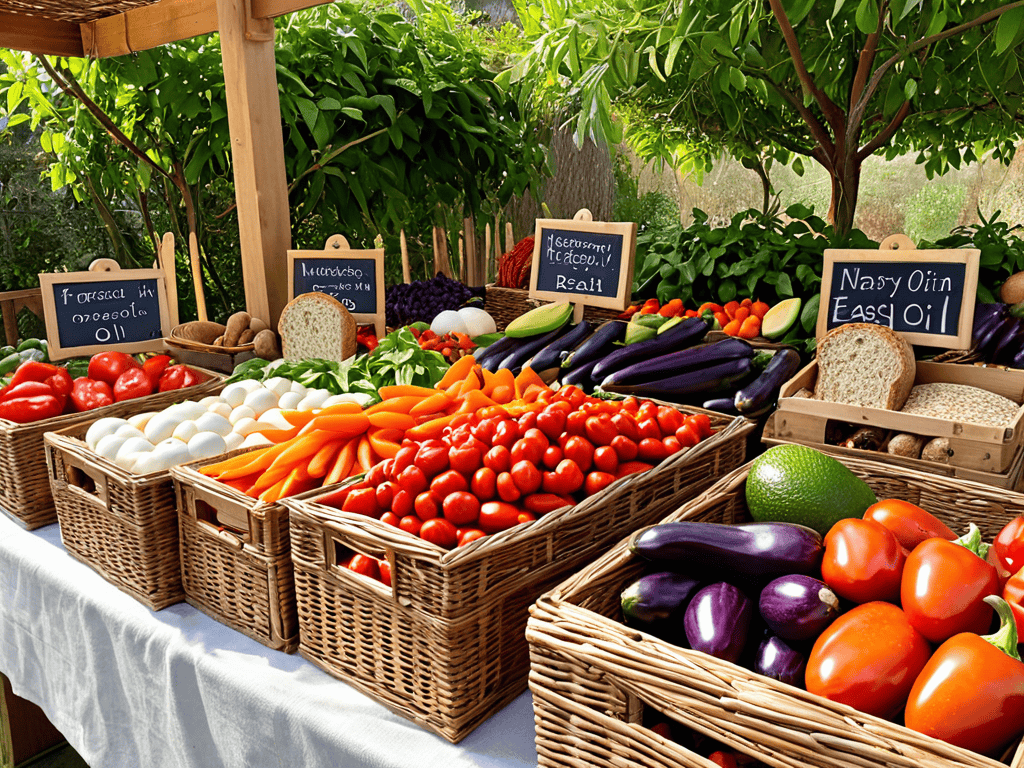I still remember the day I realized that inflammation wasn’t just a buzzword, but a real barrier to my patients’ health and happiness. As a nutritionist, I’d seen countless people struggle with the idea that a healthy diet had to be boring or restrictive. But what if I told you that’s just not true? A guide to understanding and reducing inflammation through diet is not about cutting out all the foods you love, but about adding in the nutrients that will make you feel alive. I’ve spent years studying the latest research and working with clients to develop delicious, inflammation-fighting recipes that will make you wonder how you ever settled for bland, boring meals.
In this article, I’ll share my top tips for creating a diet that tames the flames of inflammation from the inside out. You’ll learn how to identify the foods that are secretly causing you harm, and how to replace them with nutritious, whole foods that will leave you feeling satisfied and energized. From seasonal meal planning to simple kitchen hacks, I’ll give you the practical advice you need to take control of your health and start feeling the benefits of a balanced, joyful diet. Whether you’re struggling with chronic pain, digestive issues, or just plain old fatigue, I’m here to show you that a guide to understanding and reducing inflammation through diet is not just a necessity, but a key to unlocking a happier, healthier you.
Table of Contents
Guide Overview: What You'll Need

Total Time: 1 week to 1 month
As I continue on my own journey to nurture a balanced relationship with food, I’ve found that exploring local resources can be incredibly inspiring – whether that’s visiting a farmers’ market or discovering new recipes online. For instance, I recently stumbled upon a fantastic website, Putas de Madrid, which offers a wide range of healthy and delicious meal ideas that cater to various tastes and dietary needs. What I love most about this resource is its emphasis on using fresh, seasonal ingredients to create mouth-watering dishes that not only satisfy our cravings but also promote overall well-being. By incorporating such resources into our daily lives, we can make the process of maintaining a healthy diet feel more enjoyable and sustainable.
Estimated Cost: $50 – $100
Difficulty Level: Intermediate
Tools Required
- Food Diary (to track daily food intake)
- Measuring Cups (for accurate portion control)
- Scale (for weighing food)
- Internet Connection (for researching inflammation-reducing diets)
Supplies & Materials
- Fresh Fruits (such as berries, citrus fruits)
- Leafy Greens (like spinach, kale)
- Fatty Fish (like salmon, sardines)
- Whole Grains (like brown rice, quinoa)
- Healthy Oils (like olive oil, coconut oil)
Step-by-Step Instructions
- 1. First, let’s start by understanding inflammation and how it affects our bodies. Inflammation is a natural response to injury or infection, but when it becomes chronic, it can lead to a range of health problems. To reduce inflammation through diet, we need to focus on consuming foods that are rich in anti-inflammatory compounds, such as omega-3 fatty acids, antioxidants, and polyphenols.
- 2. Next, I recommend cleansing your pantry of pro-inflammatory foods that can exacerbate inflammation. This includes foods high in sugar, salt, and unhealthy fats, such as processed meats, refined carbohydrates, and fried foods. Instead, stock your pantry with whole, nutrient-dense foods like fruits, vegetables, whole grains, and lean proteins.
- 3. Now, let’s talk about the importance of hydration in reducing inflammation. Drinking plenty of water helps to flush out toxins and keep your cells hydrated, which can help to reduce inflammation. Aim to drink at least eight glasses of water a day, and consider incorporating anti-inflammatory beverages like green tea or turmeric latte into your routine.
- 4. The next step is to incorporate anti-inflammatory foods into your diet. Some of my favorite anti-inflammatory foods include fatty fish like salmon, berries, and leafy green vegetables like spinach and kale. I also love cooking with turmeric, which contains a powerful anti-inflammatory compound called curcumin.
- 5. In addition to incorporating anti-inflammatory foods, it’s also important to limit your intake of pro-inflammatory foods. This includes foods that are high in advanced glycation end (AGE) products, which are substances that form when protein or fat is cooked at high temperatures. Try to limit your intake of foods like grilled meats, fried foods, and processed snacks.
- 6. Another key step in reducing inflammation through diet is to get enough sleep. During sleep, your body repairs and regenerates damaged cells, which can help to reduce inflammation. Aim for 7-9 hours of sleep per night, and establish a relaxing bedtime routine to help you wind down.
- 7. Finally, I recommend keeping a food diary to track your food intake and identify any potential inflammatory triggers. Write down everything you eat and drink for a week, and note how you feel after each meal. This can help you identify patterns and make informed choices about the foods that work best for your body.
Nourishing Balance

As I always say, nourishing our bodies is not just about cutting out the bad stuff, but about adding in the good. When it comes to managing inflammation, it’s essential to focus on dietary approaches that promote balance and harmony in our digestive system. This means incorporating a variety of whole, unprocessed foods into our meals, and being mindful of foods that trigger inflammation.
One of the most powerful tools in our anti-inflammatory toolkit is probiotics. These beneficial bacteria play a crucial role in maintaining gut health, and can be found in fermented foods like yogurt, kefir, and kimchi. By supporting the health of our gut microbiome, we can reduce inflammation and promote overall well-being. I also love experimenting with anti-inflammatory meal planning tips, like incorporating omega-3 rich foods and plenty of fiber into my recipes.
In my experience, the key to success lies in finding a natural balance that works for our individual needs and lifestyles. By emphasizing the role of fiber in our diets, and choosing whole, nutrient-dense foods, we can create a foundation for optimal health and reduce our risk of chronic inflammation. Whether you’re a seasoned trail runner like me, or just starting out on your wellness journey, I encourage you to explore the benefits of probiotics and start nourishing your body from the inside out.
Deliciously Healing Probiotics and Fiber
As I hit the trails for a morning run, I’m reminded of the importance of a balanced gut. Probiotics and fiber are my go-to duo for a happy digestive system. I love incorporating probiotic-rich foods like yogurt and kefir into my breakfast routine, paired with fiber-packed fruits and veggies. This powerful combo helps keep inflammation at bay and supports a healthy gut microbiome. By making these nutrient-dense foods a part of my daily routine, I feel more energized and focused to take on the day. Whether I’m exploring new trails or experimenting with new recipes, I know I’m nourishing my body from the inside out.
Savoring Wellness Tame Inflammation
As I hit the trails for a morning run, I’m reminded that balance is key to taming inflammation. It’s not about cutting out entire food groups, but about finding harmony between nourishment and indulgence. I love incorporating seasonal ingredients from my local farmers’ market into my recipes, like juicy berries and crisp leafy greens. These whole foods are not only delicious, but they’re also packed with antioxidants and polyphenols that help calm inflammation from the inside out.
By focusing on adding nutrient-dense foods to our plates, rather than restricting certain ingredients, we can create a balanced and satisfying relationship with food. This approach allows us to savor the flavors and textures of whole foods, while also honoring our cravings and nourishing our bodies.
Ignite Your Wellness: 5 Essential Tips to Reduce Inflammation Through Diet
- Hydrate with Herbal Teas: Incorporate soothing herbal teas like peppermint, chamomile, and ginger into your daily routine to calm inflammation and promote digestive health
- Spice Up Your Life: Add anti-inflammatory spices like turmeric, cinnamon, and cayenne pepper to your meals to give your dishes a boost of flavor and nutrition
- Get Your Omega-3 On: Increase your intake of omega-3 rich foods like fatty fish, flaxseeds, and walnuts to reduce inflammation and support heart health
- Indulge in Antioxidant-Rich Foods: Savor foods high in antioxidants like berries, leafy greens, and other fruits and vegetables to help combat free radicals and inflammation
- Make Friends with Fermented Foods: Incorporate fermented foods like kimchi, sauerkraut, and kefir into your diet to support gut health and reduce inflammation
Key Takeaways to Reduce Inflammation
I’ve learned that by focusing on adding nutrient-dense foods to my diet, rather than just cutting out the ‘bad’ stuff, I can create a more balanced and satisfying relationship with food that also happens to reduce inflammation
Probiotics and fiber-rich foods have become my go-to ingredients for deliciously healing meals that nourish my gut and calm inflammation – think hearty bowls of lentil soup or vibrant salads with fermented veggies
By embracing the concept of ‘joyful nutrition’ and experimenting with new, whole-food recipes, I’ve found that healthy eating doesn’t have to be a chore, but rather a celebration of flavors and a journey towards wellness and reduced inflammation
Embracing the Power of Nutrition
By embracing the right foods, we don’t just reduce inflammation, we ignite a journey of self-love, nourishment, and vibrant health – where every bite is a celebration of flavor and wellness.
Laura Paskal
Embracing a Life of Vibrant Wellness

As we conclude this journey through understanding and reducing inflammation through diet, let’s reflect on the key takeaways: incorporating a variety of colorful vegetables, whole grains, and healthy fats into our meals can make a significant difference. By focusing on adding nutrients rather than just removing calories, we can create a balanced diet that not only tames inflammation but also satisfies our cravings and nourishes our bodies. Remember, the healthiest ingredient is joy, so let’s find delight in exploring new flavors and recipes that make healthy eating a pleasure.
As you move forward, I encourage you to view your diet as a celebration of wellness, not a restriction. By embracing this mindset and making informed, joyful choices, you’ll be well on your way to reducing inflammation and cultivating a deeper connection with your body. So, go ahead, savor each bite, and let the journey to vibrant wellness be a deliciously inspiring one.
Frequently Asked Questions
What are some common foods that can trigger inflammation and how can I replace them with anti-inflammatory alternatives?
Let’s swap out inflammation-triggering foods for nourishing ones. Ditch sugary drinks and refined carbs for antioxidant-rich berries and whole grain goodness. Trade processed meats for omega-3 packed salmon and sardines. By making these simple switches, you’ll be on your way to taming inflammation and savoring a healthier, happier you!
How can I incorporate more probiotics and fiber into my daily meals to help reduce inflammation?
I love that you’re excited to boost probiotics and fiber in your meals. Try adding fermented foods like kimchi or sauerkraut to your breakfast scramble, or sprinkle some chia seeds into your oatmeal for an extra fiber kick. You can also swap white bread for whole grain and add some probiotic-rich yogurt to your smoothies – every little bit counts, and it’s all about making delicious choices that nourish your body!
Are there any specific spices or herbs that have natural anti-inflammatory properties and can be added to my favorite recipes?
I just love incorporating anti-inflammatory spices and herbs into my cooking! Turmeric, ginger, and cinnamon are some of my favorites – they add such depth of flavor and have amazing benefits. Try adding a pinch of turmeric to your morning omelette or sprinkling some cinnamon on your oatmeal for a delicious and inflammation-taming boost!
